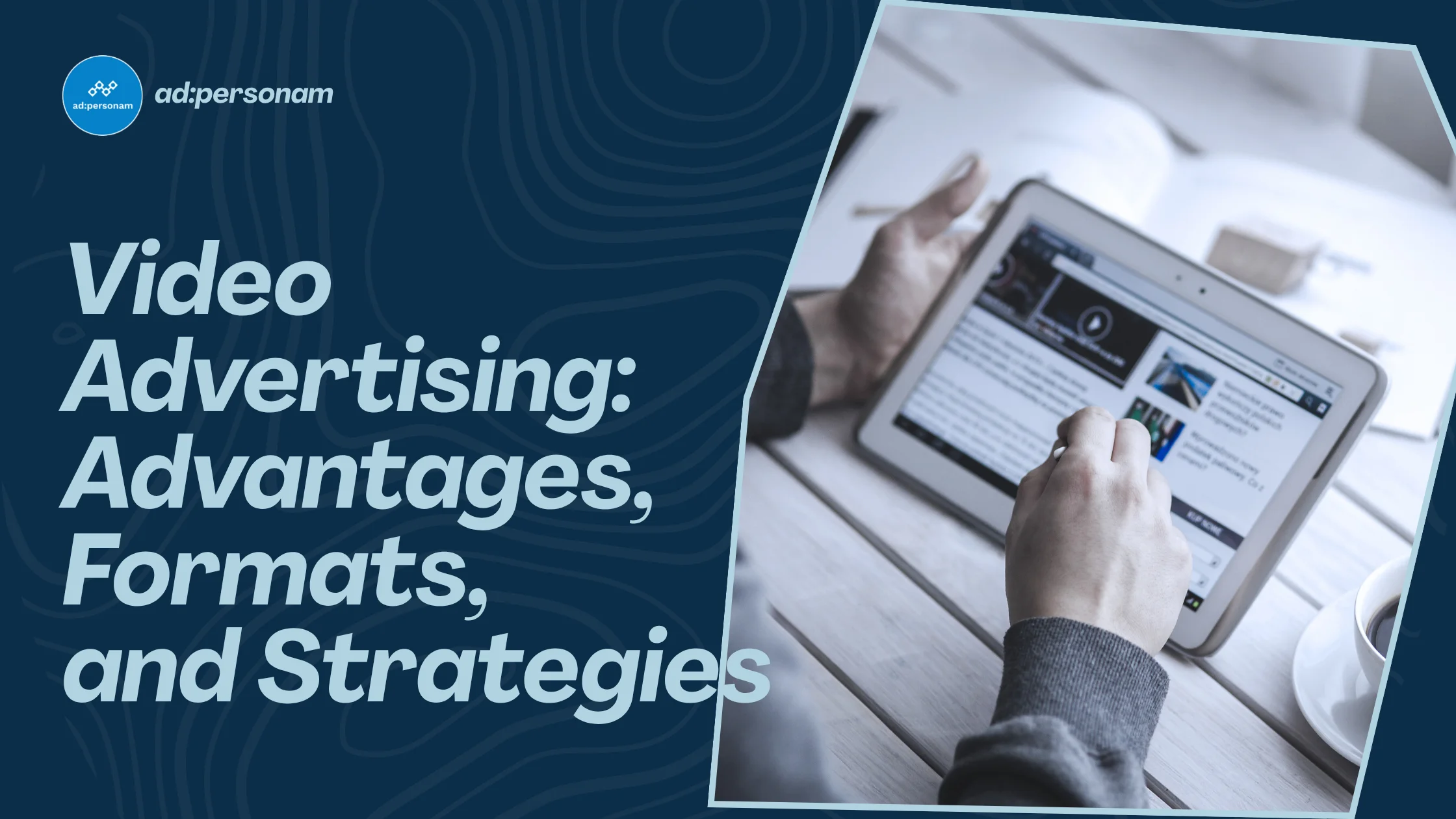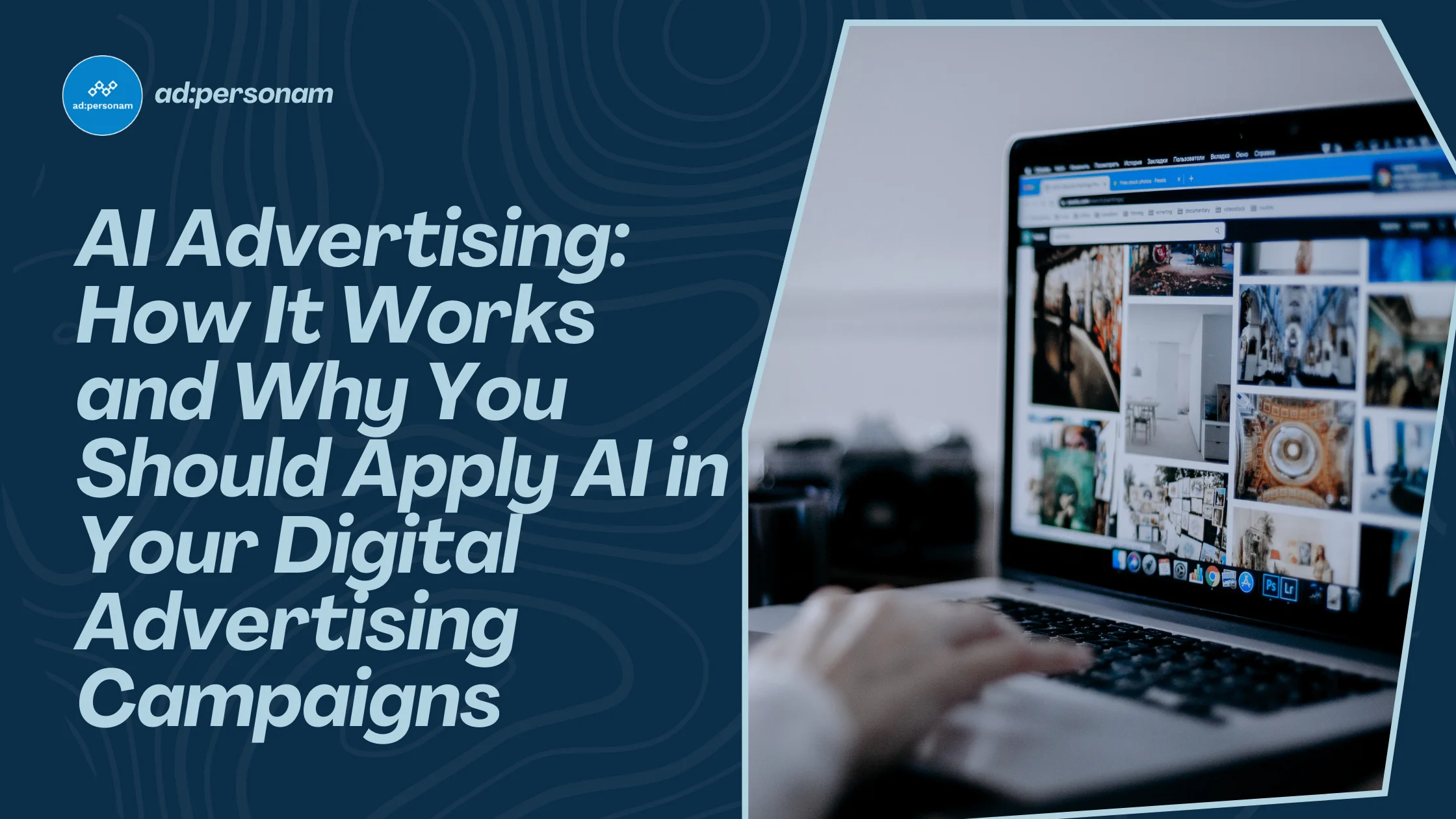Audio Advertising: Complete Guide to Programmatic Audio & Podcast Ads
Discover what audio ads are, explore high-definition audio ad formats, and learn how to create effective digital audio campaigns with programmatic DSP and AI-driven optimization.
Contents
- Audio Advertising: Definition and Formats
- The Advantages of Digital Audio Advertising
- Building an Audio Ad Strategy
- Advanced Targeting for Audio Ads
- Programmatic Audio and DSP
- Podcast Advertising: Characteristics and Best Practices
- Audio In-Store and Retail Audio
- Creative Production for Audio Ads: Script and Voice
- Measurability and KPIs for Audio Ads
- Attribution and Tracking
- Pricing and Commercial Models
- Audio Ad Optimization and Automation
- Regulation, Privacy, and Compliance
- Omnichannel Integration: Audio, DOOH, and Web
- Common Challenges and Technical Solutions
- Case Studies and Use Cases
- Tools and Platforms for Audio Ads
- Best Practices for Creative Compliance

Audio advertising delivers digital ad messages through audio-only formats across podcasts, online radio, and music streaming platforms. This guide provides media buyers, advertisers, brand managers, and DSP users with practical tools to understand when to use audio ads, how to measure them effectively, and explore concrete operational examples.
We'll dive into formats, creative best practices, targeting capabilities, KPIs, and real-world use cases for digital audio advertising.
Audio Advertising: Definition and Formats
Audio advertising refers to digital audio ad formats delivered through streaming and podcast platforms. Core formats include pre-roll (ads before content), mid-roll (ads during content), and post-roll (ads after content), typically running 15-30 seconds.
Additional formats include native host-read spots within podcasts, audio banners or companion ads that pair audio with visual elements, audio outstream, and in-store audio for retail environments. Advanced formats leverage interactive audio with voice CTAs or click-to-listen functionality and dynamic ad insertion (DAI) that delivers personalized ads in real-time.
The Advantages of Digital Audio Advertising
Audio ads deliver high reach during high-attention moments like commuting or exercising. They offer cost-effective solutions for awareness campaigns and excel at storytelling through emotionally resonant sound.
In programmatic audio advertising, advantages include scalable targeting, real-time optimization, and first-party data integration. Research shows listeners are more receptive, with increased recall and engagement compared to other formats.
Building an Audio Ad Strategy
An effective strategy unfolds through key phases: start with clear objectives, move to channel and format selection, then audience targeting and segmentation. Next comes creative briefing, content production, planning and DSP bidding, followed by continuous monitoring and optimization. Integrating audio campaigns with display and video ensures message consistency and creative sequencing.
Advanced Targeting for Audio Ads
Targeting capabilities include demographics, geolocation, dayparting (selecting specific time windows based on audience behavior), behavioral signals, audio contextual targeting, proprietary or third-party audience segments, lookalike modeling, and device type.
Ad:personam, for example, leverages performance signals combined with artificial intelligence to optimize targeting and bidding. Techniques to minimize waste include frequency capping and audience suppression (like recent customers).
Discover more features of our Self-Service DSP!
Programmatic Audio and DSP
DSP (Demand Side Platform) and SSP (Supply Side Platform) technologies enable programmatic audio, managing real-time auctions for audio inventory. Platforms facilitate audience activation, campaign management (line items), dynamic bidding, and detailed reporting. Standardized protocols and APIs with server-to-server synchronization power dynamic ad insertion (DAI).
Podcast Advertising: Characteristics and Best Practices
Podcasts differ from streaming in context and engagement type. Typical podcast ad formats include host-read (announcements read by the presenter), pre-recorded spots, sponsorships, and branded segments. Host-read ads are particularly effective for trust and message performance. Creative best practices emphasize conversational tone, clear CTAs, optimal duration, and well-integrated dedicated landing pages.
Audio In-Store and Retail Audio
In-store audio ads function as background music, promotional messages, or beacon-triggered targeted interactions. They're used for point-of-sale promotions, cross-selling, and upselling, integrating with POS systems and digital campaigns. Measurement relies on metrics like incremental visits (visit lift) and sales increase (uplift).
Creative Production for Audio Ads: Script and Voice
Script writing demands a strong opening with Unique Selling Proposition (USP) within the first 5-7 seconds, followed by an explicit and memorable CTA. Voice selection considers tone, gender, and regional accents, paired with music and sound effects to enhance attention and memorability.
Measurability and KPIs for Audio Ads
Key KPIs for audio ads include impressions, completion rate (percentage of completed spots), CTR for interactive formats, conversion rate, brand metric uplift (awareness, recall), and incremental sales or visits. For podcast audio ads, monitor downloads, listen-through, and unique listeners; for in-store audio ads, use footfall data and sales lift. Effective dashboards display aggregated and segmented metrics by audience and cohorts.
Attribution and Tracking
Attribution and tracking tools include click-to-listen URLs, vanity URLs, promo codes, server-side tracking, app analytics and GA4, plus tracked companion banners. Audio attribution faces limitations, so incremental testing methods like holdout groups, geo-split tests, and experimental designs measure actual impact.
Pricing and Commercial Models
Primary models include CPM, CPCV (cost per completed view), and CPA for direct response, while podcasts often use fixed-fee sponsorships. Model choice depends on campaign objectives and desired control level. Benchmarks are available for estimating ROI in audio media plans.
Audio Ad Optimization and Automation
Best practices for audio ad optimization and automation include A/B testing creative variations, frequency capping, segment-based bid adjustments, and optimization for completion or conversion. Artificial intelligence supports creative optimization, dynamic creative optimization (DCO), audience scoring, and automated bidding.
Regulation, Privacy, and Compliance
For audio advertising, GDPR and consent regulations apply when processing personal data (PII). Cookieless targeting strategies rely on contextual targeting or cohorts, maintaining compliant audit trails. Data processing documentation is essential for compliance.
Omnichannel Integration: Audio, DOOH, and Web
Optimization and effectiveness strategies for audio ads include synchronized messaging and creative sequences across audio, DOOH, and web, with cross-channel frequency management. Brand campaigns can combine CTV spots, audio, and display with unified measurement through ID Graphs or server-side matching.
Common Challenges and Technical Solutions
Frequent issues include low completion rates, creative-channel mismatches, podcast tracking difficulties, and frequency cap conflicts. Solutions involve improving creative hooks, revising placement and targeting, using companion creatives, and frequent tag audits.
Case Studies and Use Cases
We've selected effective audio ad campaigns based on objectives. Here are 3 case studies:
- Brand awareness: a multinational pharmaceutical company ran a programmatic campaign with audio ads, integrating real-time third-party data and automatically optimizing campaigns. It reached millions of new listeners across the U.S. The goal was efficiently expanding reach in a premium environment where attention is high. Primary KPIs were impressions, new user reach, and brand recall increase. This multi-channel strategy drove significant brand awareness growth, demonstrating digital audio effectiveness in healthcare.
- In-store product promotion: during a 4-week in-store campaign, a major tissue brand used audio ads with realistic sounds (like sneezes) to capture customer attention during flu season. Timely messaging positioning the product as an ideal gift significantly increased product awareness and point-of-sale sales.
- Product launch with podcast sponsorship and DSP retargeting: a consumer goods brand launched a new product using podcast sponsorship combined with DSP campaigns for dynamic retargeting. Host-read podcast spots built trust and emotional engagement, while the DSP enabled reaching high-purchase-probability audience segments with personalized messages across other digital channels. The project used metrics like download and listen-through rate to evaluate podcast engagement, while the DSP monitored conversions and ROAS on cross-platform retargeting campaigns.
Tools and Platforms for Audio Ads
Various tools support audio ad planning and management. Primary provider types include: DSP with audio inventory, audio SSP, podcast marketplaces, streaming platforms (e.g., Spotify, TuneIn), and ad servers with DAI. Partner selection considers available inventory, targeting quality, detailed reporting, and seamless API integration.
Best Practices for Creative Compliance
Audio ad guidelines require mandatory disclaimers. Regarding language and visual materials, prohibited terms and unauthorized images must be considered. CTAs must be clear, transparent, and timely, providing all useful information and emphasizing sponsorship, especially in podcasts.
Frequently Asked Questions About Audio Ads
What does audio ad mean?
An audio ad is an advertising announcement in audio format delivered on digital platforms like podcasts or streaming. Users listen while performing other activities. Through DSPs like ad:personam, you can easily target and optimize campaigns.
What is high-definition audio ad?
It's an audio ad with superior sound quality, ensuring vocal clarity and musicality, primarily used in premium podcasts and advanced audio platforms. On ad:personam, you can upload and manage high-definition audio.
Which audio format is best for advertising?
Standards are MP3 or WAV; MP3 is versatile for most platforms, while WAV offers superior quality for premium content. Ad:personam suggests the ideal format based on chosen ad placements.
To discover how to integrate your audio ads into programmatic campaigns, use ad:personam's Self-Service DSP platform!
You might also like

Video Advertising: Complete Guide to Formats, Strategies, and CTV Campaigns
Master video advertising: formats, strategies, and CTV campaigns. Learn to optimize your video ads with AI-driven DSP platforms for maximum ROI.

AI Advertising: How It Works and Why You Should Apply AI in Your Digital Advertising Campaigns
Discover how AI Advertising works, its advantages and the tools to automate, optimize and scale your campaigns with artificial intelligence.

Demand Side Platforms: What DSPs Are and How They Work
What are DSPs, how do they work and why use them in programmatic marketing? Discover how you can test ad:personam to create effective campaigns with complete autonomy, in self-service mode.